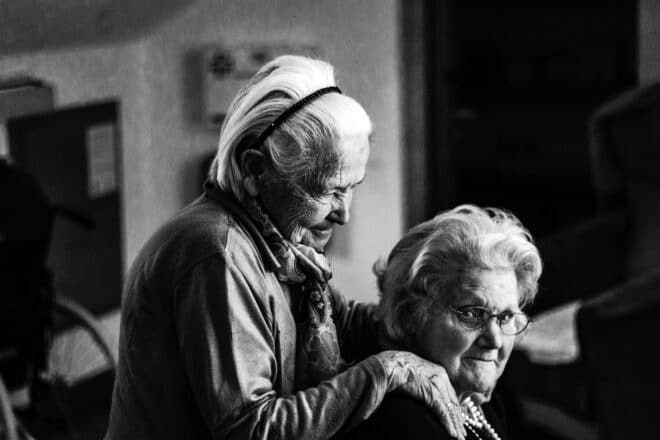You’re on a journey whose terrain could be unknown and full of surprises, and this understanding is key to navigating the landscape of end-of-life caring for your loved ones. Reading “Guidance for Caregivers: End-of-Life Signs in Different Diseases”, a resource provided by Crossroads Hospice & Palliative Care, is akin to having a compassionate guide help you understand the various physical, emotional, and spiritual changes that mark the end-of-life stage across a range of diseases – from cancer to dementia, and so much more.
With a vigilant eye on physical changes like altered sleep patterns, restlessness, and changing dietary habits, capped with a delicately balanced understanding of emotional occurings like withdrawing, or saying goodbye, you’ll be better equipped to comfort and support your loved ones in this sensitive time. In addition to these guidelines, Crossroads also lends a supportive hand with valuable resources tailored to specific circumstances you may face, such as preparing for a parent’s passing or understanding blood pressure fluctuations before death.

Understanding the Role of a Caregiver
The job of a caregiver
As a caregiver, you play a critical role in enhancing the quality of life for patients, particularly those nearing the end of their life. Primarily, your job entails fulfilling the physical, emotional, and sometimes, spiritual needs of patients. This might involve basic hygiene care, such as bathing and dressing, or complex procedures like administering medication. Your role extends beyond physical care to include offering emotional support, easing patient fears, and generally exhibiting patience and compassion.
Emotional toll on caregivers
Undeniably, caregiving, especially end-of-life care, can exert a substantial emotional toll on you. Grieving can start long before you lose Your Loved One, known as anticipatory grief. Alongside, feelings of anger, guilt, distress, and even resentment can surge. Burnout is not uncommon, as the job can be physically demanding and emotionally draining, leaving you feeling depleted, isolated, or misunderstood.
Support networks for caregivers
Despite the challenges, it’s vital to remember that you’re not alone. Support networks for caregivers are readily available to provide emotional, psychological, and practical assistance. From caregiver support groups, healthcare providers, social workers, to faith communities, these networks offer a platform to share experiences, vent out frustrations, voice fears, and learn from others undergoing similar experiences.
Recognizing Common End-of-Life Signs
Physical changes
End-of-life signals can manifest as numerous physical changes. For instance, a general weakening of the body can lead to increased sleep, weight loss, and a slowing down of bodily functions. Hands, arms, legs, and feet may feel cooler to touch, and the skin appears pale or mottled. changes in breathing patterns, decreased urine output, and incontinence may occur. Appetites often decrease, leading to a drop in fluid and food intake.
Emotional and spiritual changes
As death nears, emotional and spiritual changes are common. Patients might exhibit behaviors associated with pre-death restlessness. They may begin to detach, withdrawing from people and social activities they previously enjoyed, appearing contemplative or introspective. It’s not uncommon for patients to have vision-like experiences or give away their belongings.
Timeline for end-of-life changes
These changes typically follow a timeline, starting one to three months before death where the person may lose appetite and sleep more. In the last one to two weeks, you may notice growing confusion and restlessness. Eventually, gasping and irregular breathing occur moments before death. However, exact timelines differ per individual and are unpredictable in essence.
End-of-Life Symptoms in Cancer Patients
Common symptoms
Common end-of-life symptoms in cancer patients include fatigue, pain, loss of appetite, nausea, and difficulty breathing. Moreover, the fluctuation of consciousness levels may result in confusion or delirium.
How to offer comfort
Providing Comfort involves managing various symptoms, pain being paramount. Effective pain management strategies involve medication, frequent turning and repositioning, and gentle massages. Ensuring a peaceful environment, assuring the patient of their safety, and speaking soothingly can also help ease anxiety.
Understanding the dying process with cancer
Understanding the dying process allows you to ensure the patient’s comfort to the greatest possible extent. In the final stages, digestion slows, appetite decreases, and consciousness dwindles. Knowing What to Expect can give you courage and confidence to better care for your loved ones.
End-of-Life Signs in Dementia Patients
How dementia affects the end of life
Dementia, characterized by memory loss and confusion, can profoundly impact the end of life stages. Patients might lose their ability to understand or recognize common things, engage in meaningful communication, or remember loved ones.
Recognizing dementia end-of-life signs
Signs that a dementia patient is nearing the end of their lives include increased physical weakness, minimal to no interaction with the environment, inability to swallow, and profound disorientation. Emotional distress may surface in the form of agitation, fear, or anger.
Caring for dementia patients during end-of-life
At this stage, the primary focus is on maintaining patient dignity and quality of life, with a heavy emphasis on comfort. This involves careful feeding, managing incontinence, ensuring a peaceful environment, and the frequent presence of familiar faces for reassurance.

Monitoring End-of-Life Symptoms for Those with Lung Disease
Breathing difficulties and other physical symptoms
In the end stages of lung disease, patients generally experience breathing difficulties, coughing, fatigue, and pallor.
Emotional effects of lung disease
Psychologically, they might feel high levels of anxiety and panic due to their impaired respiratory function and subsequent fear of suffocation.
Support for caregivers of lung disease patients
As a caregiver, it’s crucial to ensure patients feel as comfortable as possible, which encompasses maintaining an oxygen-rich environment, limiting exertion, and providing psychological reassurance when anxiety spikes.
Watching for End-of-Life Indications in Kidney Failure Patients
Physical signs of kidney failure
End-of-life indications in kidney failure patients range from a decrease in urine output, swelling in parts of the body, confusion due to buildup of toxins, and discomfort or pain.
Mental and emotional changes in kidney disease
Diminished kidney function leading up to death may cause mental confusion, heightened anxiety, depression, and restlessness, signalling an end-of-life scenario.
Support for end-of-life care with kidney failure
As a caregiver, managing fluid intake, alleviating pain and discomfort, offering mental support, and remaining patient and understanding is paramount.

Recognizing End-of-Life Signs in Heart Disease Patients
Physical symptoms in heart disease
For heart disease patients, breathlessness, fatigue, swelling of the limbs, and chest discomfort are common end-of-life signs.
Helping heart disease patients cope
Providing comfort could be through monitoring and administering medication for pain, easing breathlessness, and reducing fluid buildup. Your emotional support and reassurance are equally critical.
Understanding end-of-life care for heart disease
Understanding involves keeping a lookout for escalating symptoms, knowing when to call healthcare providers, and maintaining an accurate medication regime.
Coping with End of Life Signs in Patients with Liver Disease
Symptoms in liver disease
Increased weakness, loss of appetite, confusion due to toxin buildup, jaundice, and fluid accumulation in the abdomen are common end-of-life signs in liver disease.
Comforting liver disease patients
Your role is to offer comfort by managing itching, adjusting diet to accommodate loss of appetite, dealing with fluid buildup, and providing pain relief and emotional support.
Dealing with end-of-life signs in liver disease
Being constantly vigilant and responsive is crucial. This involves promptly addressing new symptoms, ensuring the patient’s comfort, and precisely administrating medication.
End-of-Life Signs in Neurological Disease
Understanding neurological impact
Neurological diseases, such as Parkinson’s and ALS, can impair motor functions, speech, cognition, and swallowing ability, profoundly impacting the patient’s end-of-life quality.
Recognizing end-of-life signs in neurological diseases
Recognizable signs include increased physical weakness, drastic weight loss, limited communication, and an overall decline in physical and cognitive abilities.
Providing comfort and care for neurological disease patients
Ensuring regular mouth care, positioning the patient comfortably to prevent bedsores, gently encouraging communication, and providing emotional comfort are key roles as a caregiver.
End-of-Life Resources for Caregivers
Preparing for the death of a patient
Preparation entails psychological readiness to let go, making necessary arrangements, and embracing the support of your network during your grief process.
Understanding blood pressure and breathing patterns before death
In end-of-life stages, a drop in blood pressure and changes in breathing patterns are expected. Understanding these signs helps in offering quality comfort care and emotional preparation.
Guidance and support for caregivers during difficult times
In such testing times, leaning on available resources for guidance and support is vital. Remember, your feelings are valid and remember to take care of yourself too.
